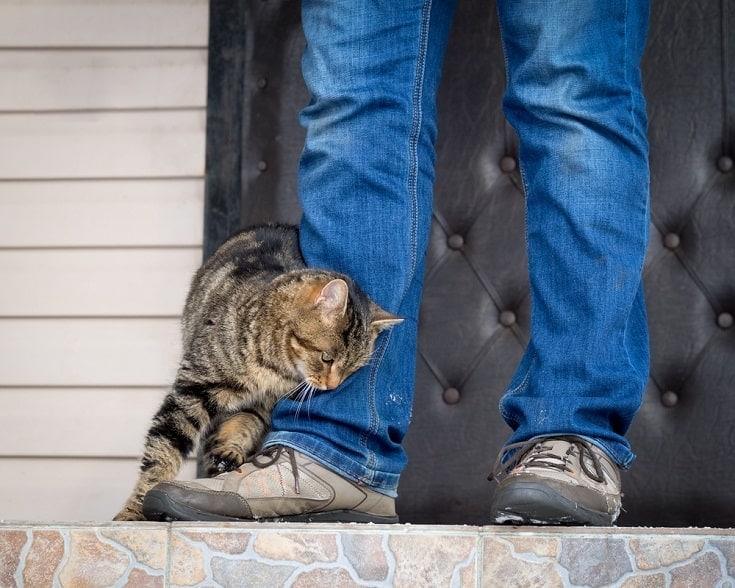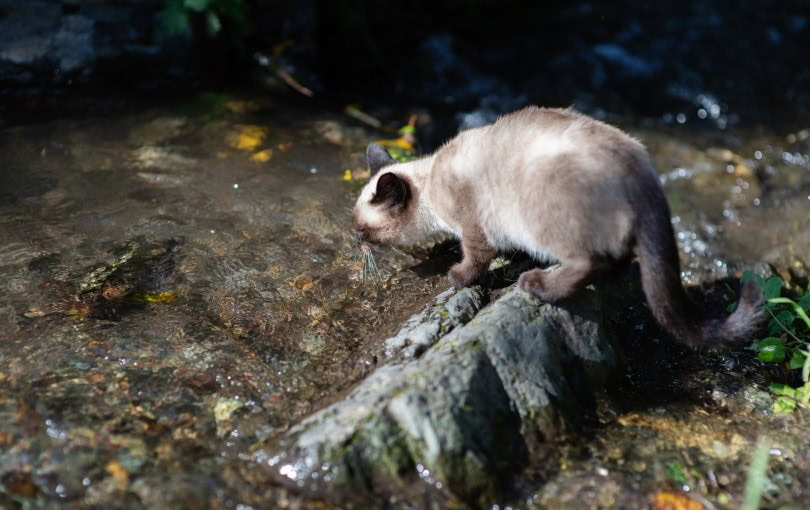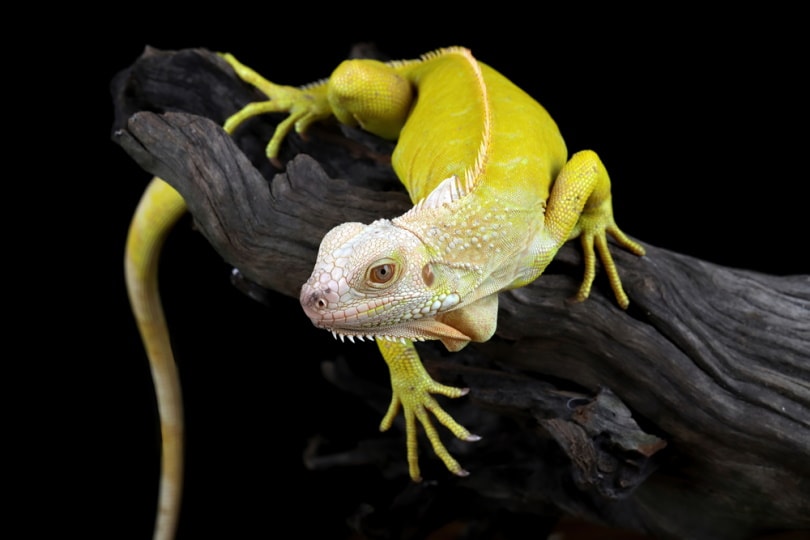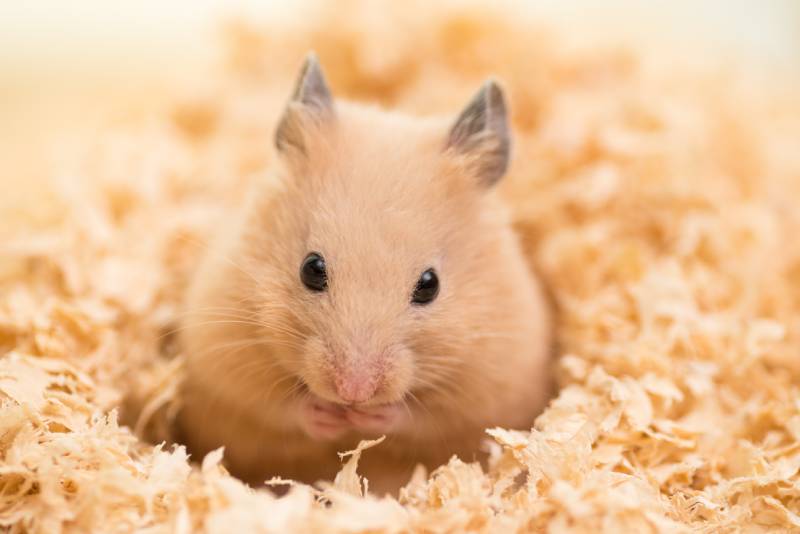VET APPROVED

The information is current and up-to-date in accordance with the latest veterinarian research.
Learn more »Most of the time, when you picture a pet who will protect you, it’s probably a dog—the bigger the better! But dogs aren’t the only pets who can behave protectively. Cats may not be very big, but that doesn’t mean they can’t get in on the “guard dog” act. Here are nine common signs your cat is protecting you.
The 9 Common Signs Your Cat Is Protecting You
1. Clinginess
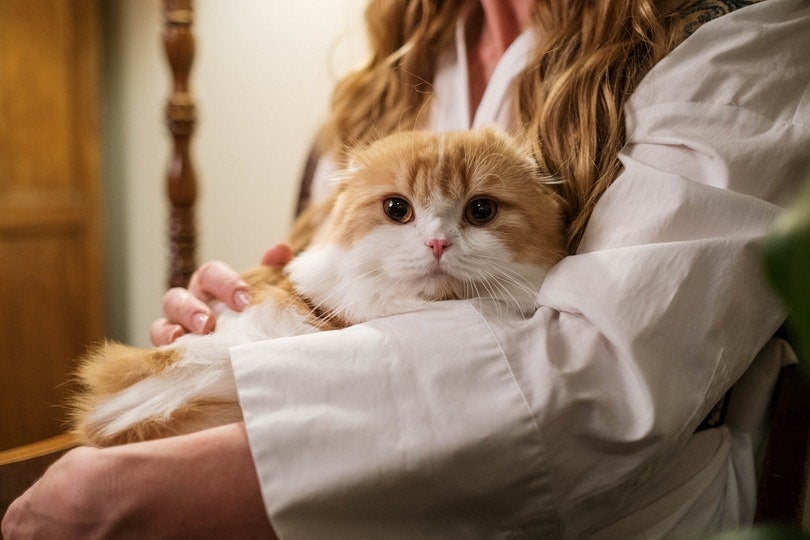
If your cat suddenly turns into a “Velcro cat”, refusing to leave your side and following you wherever you go, it could be a sign of protection. Cats are good at recognizing human emotions and responding to them (although not quite as good as dogs). If you are feeling anxious or fearful, your cat may sense this and stick closer to you.
In addition, a cat’s senses are more finely tuned than ours, allowing them to hear, smell, or see things we can’t. If your cat feels something is amiss, they may get clingy for their own protection as well as yours.
- Point to Consider: Clinginess can also be a sign that a cat is in pain or not feeling well. If the behavior doesn’t seem to be motivated by a threat, consider whether a trip to the vet is needed.
2. Vocalizing
You’re probably familiar with your cat’s purring, chirping, and meowing. However, your cat may vocalize in other ways to demonstrate aggression or protection. Growling and hissing are two familiar sounds that show your cat is agitated. Some cats also produce other noises, like an ear-splitting yowl or deep, slow meow. Generally, the cat probably hopes to avoid a fight by scaring away whatever they feel is threatening you or themselves.
- Point to Consider: Be careful about handling or approaching a cat in an agitated, vocal state. Cats have an unfortunate habit of redirecting their aggression away from an actual threat onto an innocent bystander, such as yourself or another pet.
3. Puffed-Up Fur
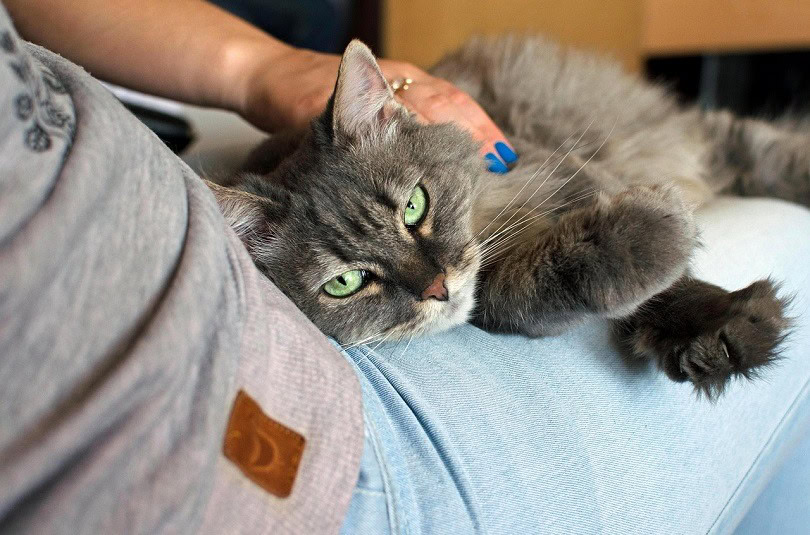
Cats often puff up their tails or even the fur on their whole body in response to a threat. By doing this, they make themselves look bigger and hopefully scarier to a potential enemy. The goal is to prevent a fight by frightening off the threat instead. Officially, this behavior is called piloerection and is a reflexive response in the cat, controlled by the nervous system.
- Point to Consider: Like with the vocalizing cat, beware of the cat who’s puffed up like they stuck their tail in a light socket. A cat in this emotional state may not realize who they are lashing out at until it’s too late. This is another reason to supervise all interactions between pets and children.
4. Flattened Ears
Another sign that your cat is entering “attack and protect” mode is when their ears are pinned flat against their head. In theory, your cat may be attempting to protect a vulnerable body part in the event of a fight. Sometimes, a cat may simply turn their ears backward rather than fully flatten them for the same purpose. If your cat is on alert but not sure whether they should be protecting you, their ears may be up and active, swiveling in all directions as they try to determine where the danger is coming from.
- Point to Consider: Cats may also flatten their ears if they are scared. Scared cats can also behave aggressively, however, so caution is still advised.
5. Arched Back (Halloween Cat)
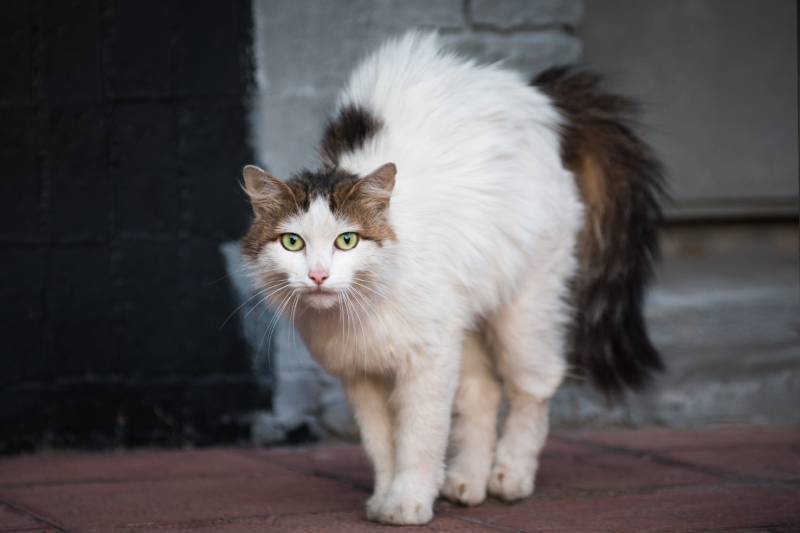
Besides the puffed-out coat, another trick a protective cat may employ is arching their back up in the classic “Halloween Cat” pose. Again, this behavior is meant to be intimidating to an enemy, hopefully scaring them away from a confrontation. Often, the arched back is accompanied by other behaviors such as vocalizing and flat ears. Some cats slowly walk sideways toward the threat with their back arched.
- Point to Consider: Cats may also display a similar posture when they feel playful with you or another animal. In that case, it’s a form of play fighting, not a protective behavior. Watch for other visual clues to let you know your cat is playing, not intimidating.
6. Tail Lashing
When a dog wags their tail, it’s usually (but not always) a sign of happiness. When a cat does it, it usually means the opposite. A cat’s tail is one of the most expressive parts of their body. Fast, aggressive tail movements are a sign that a cat is worked up and could indicate that they’re ready to engage and protect you. Some cats crouch low to the ground and swat their tail, preparing to pounce if necessary.
- Point to Consider: Cats may also lash their tails during play or if they’re trying to stalk the birds outside at the feeder. Even if your cat is only feeling playful, the tail movement indicates they are in a reactive state and can still hurt you by accident.
7. Dilated Pupils
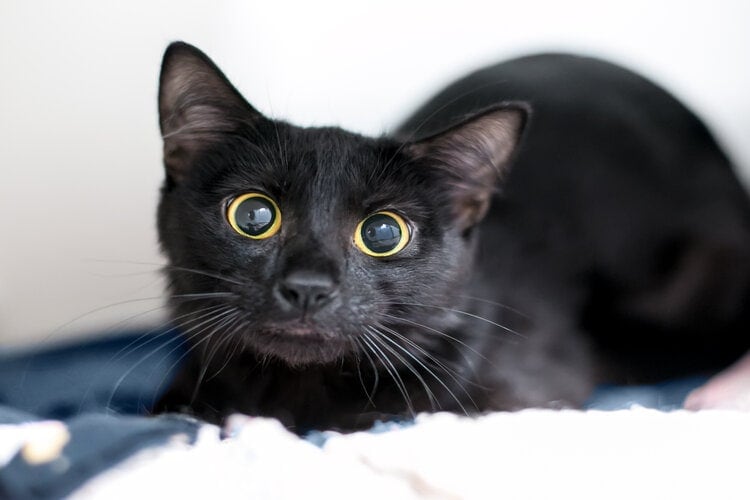
Another sign your cat is protecting you may be dilated pupils. If all you see is black when you look at your cat’s eyes, that’s a clue that they are agitated and possibly ready to become aggressive. Any strong emotion or stimulating situation can cause your cat’s pupils to dilate involuntarily. Like piloerection, it’s an involuntary response. It also has the bonus of making your cat look more frightening.
- Point to Consider: Dilated pupils can also indicate a medical condition, such as neurological disease or intoxication. Pupil dilation due to aggression or agitation should be temporary. If your cat’s eyes stay dilated, something else could be going on that needs veterinary attention.
8. Whisker Pointing
A cat’s whiskers are one of their most important sensory organs. They also play a vital role in communicating feelings, including stress or agitation. Your cat may point their whiskers toward potential threats if they’re trying to protect you. Alternatively, your cat could pull their whiskers tight against their face if they feel out of sorts. Small muscles at the base of each whisker allow the cat to control their direction, whatever emotion they’re trying to communicate.
- Point to Consider: Cats may also flatten their whiskers if they feel sick or in pain.
9. Choosing Violence
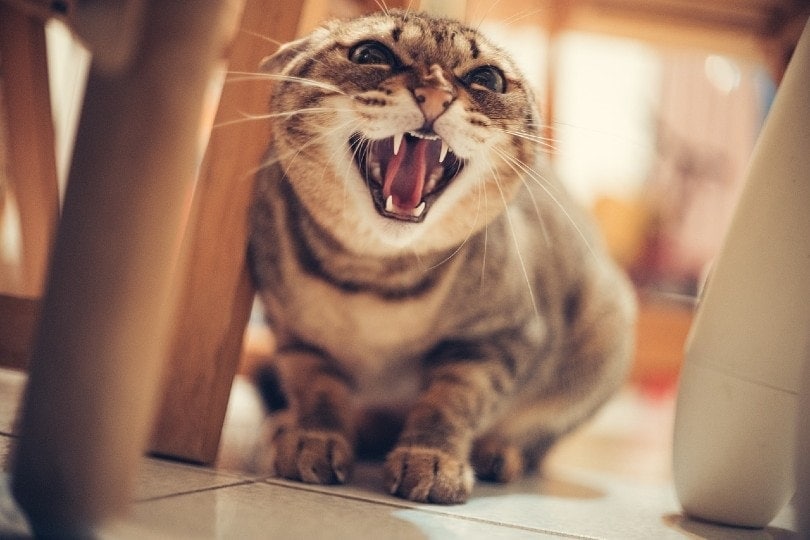
The final sign that your cat is protecting you is when they give up on trying to scare off the threat and attack. Your cat may use their paws to swat or bat at the enemy. They may even scratch or bite like this cat did when a burglar tried to enter his home. Cats typically try to avoid conflict, but they can deploy their teeth and claws to protect themselves or you if needed.
- Point to Consider: Cat bites and scratches are not only painful, but they also carry a high risk of infection and potentially transmissible diseases. If you find yourself the victim of redirected aggression, seek medical advice from your doctor as soon as possible.

When Protection Goes Too Far
While you may appreciate your cat’s protective behavior in the face of a break-in or other scary situation, what happens if your cat gets the wrong idea about who you need protection from?
Because of their territorial nature, cats can become aggressive or protective in situations they perceive as threatening, even if you don’t. For example, your cat may view a new pet, new roommate, or even a new baby as a threat and attempt to protect you from them.
If your cat’s aggression is directed inappropriately, it could create a dangerous and stressful situation. An estimated 27% of cats taken to animal shelters are given up because of aggressive behavior. To prevent your cat from becoming a statistic, seek professional help from a cat behaviorist or veterinarian.

Conclusion
Dogs may be labeled “man’s best friends,” but cats can also form deep bonds with people despite their reputation to the contrary. In some cases, that bond could lead to your cat protecting you from harm, real or perceived. Remember, some of these signs could also indicate other issues, including medical conditions. Anytime you’re worried about your kitty, don’t hesitate to contact your veterinarian.
Featured Image Credit: Irina Kozorog, Shutterstock
